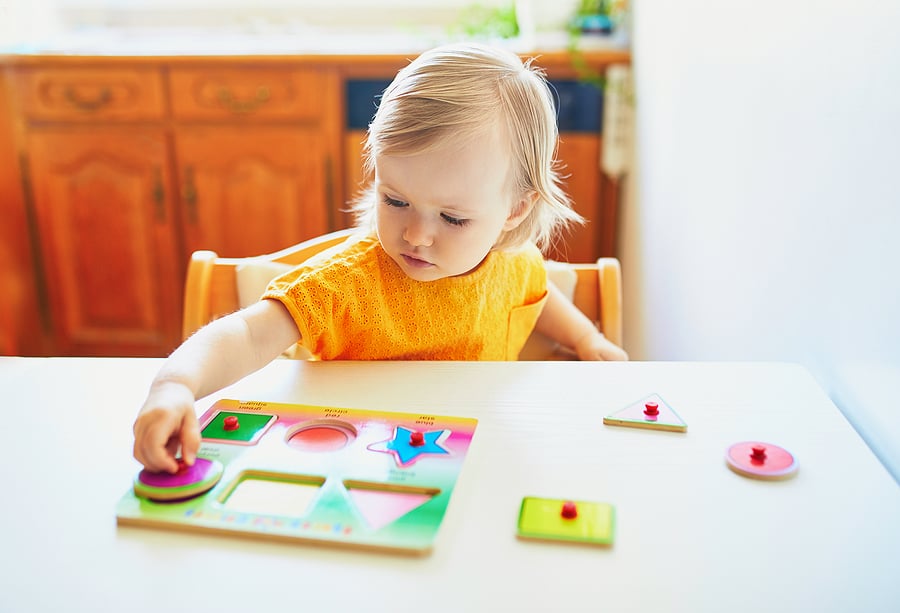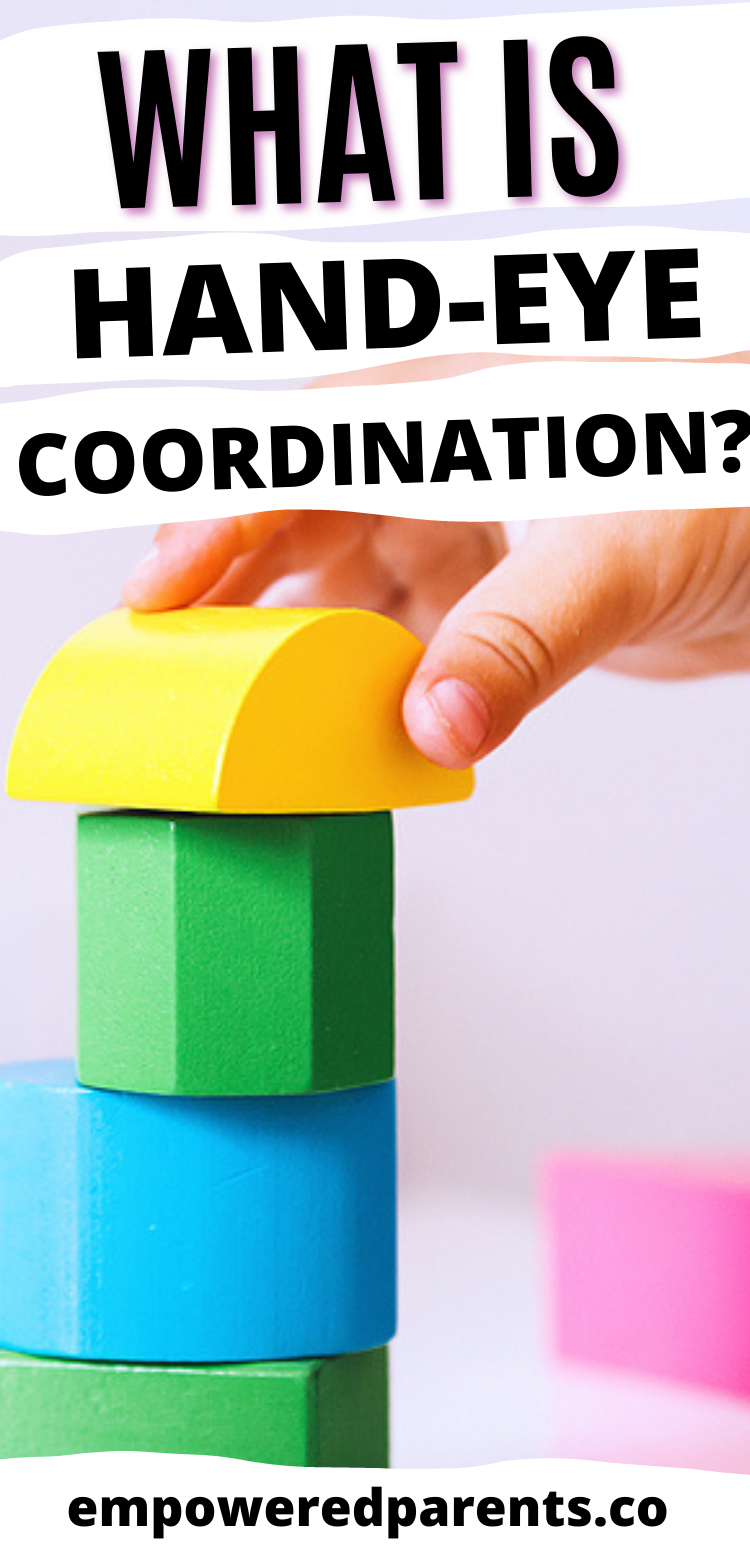What are hand-eye coordination skills and how can you develop them in young children?
What is Hand-Eye Coordination?
Hand-eye coordination is the ability to perform movements with the hands while being guided by the eyes.
Also called eye-hand coordination, it is a perceptual-motor skill – a joint effort between the sensory system (sense of sight) and motor skills.
Some examples of other perceptual-motor skills include:
- Visual and auditory perception
- Gross and fine motor skills
- Body awareness
- Spatial awareness
- Eye-foot coordination
- Crossing the midline
Examples of Hand-Eye Coordination
Here are some examples of hand-eye coordination:
- Building a tower of blocks
- Catching a ball
- Cutting along a line
- Writing letters and numbers
- Eating with utensils
Any activity where the eyes and hands need to work together requires this coordination. The eyes are used in many activities but are not always essential.
It would be tough to catch a small ball flying at you unless you had excellent hand-eye coordination, but you’d probably find washing your hands with your eyes closed relatively simple.
Can Hand-Eye Coordination Be Taught?
Hand-eye coordination is a part of child development and is a skill that develops naturally, as babies and toddlers explore their environment and play with objects.
While you don’t “teach’ it as such, it is essential that children have enough opportunities for play and free exploration, from infancy right into the preschool years.
A child who is always restricted in their environment and told ‘no’ has fewer opportunities to develop this skill than a child whose environment has been set up for learning, with relative freedom.
Babies and toddlers are fascinated with all kinds of objects – the plastic containers in the kitchen are as fun to play with as any of their toys – and they love carrying things around from place to place.
This fascination with things and experimenting with them is how they start to develop hand-eye coordination.
Toddlers enjoy pouring water into cups in the bath, stacking blocks, eating with utensils and trying to make wooden puzzle pieces fit.

They start to throw balls and try to catch them by learning to place their hands together and watch carefully, following the path of the ball as it flies through the air.
Preschoolers involve themselves in activities such as painting and drawing, cutting, threading beads, lacing, knocking nails into wood, sewing, building puzzles, placing pegs into a pegboard and much more.
Learning through play is the key to developing hand-eye coordination in early childhood.
Hand-Eye Coordination Benefits
Children who build good eye-hand coordination have many advantages, both at home, at school and later in life.
- They are able to complete self-care tasks such as dressing, tying shoelaces, eating meals independently, etc.
- Having good coordination is essential for being able to write and copy letters and numbers. It is therefore a vital skill for academic ability.
- Children feel greater success when they can accomplish tasks such as catching a ball in a game, completing a task in class successfully and generally managing tasks that require the hands and eyes to coordinate.
- Many physical activities, and later on, organized sports, rely on excellent hand-eye coordination.
- There are many professionals – such as cricketers and surgeons – who rely heavily on this skill. [source]
How to Improve Hand-Eye Coordination In Children
While there is a place for doing hand-eye coordination in drills in certain situations – such as during sports sessions – it is best to offer young children opportunities to naturally develop this skill through play.
These kinds of activities make the best hand-eye coordination exercises:
- Playing with balls of all sizes – throwing, catching, bouncing, rolling or any ball activities.
- Block play – stacking blocks into towers and making all kinds of block structures.
- Playing with other construction toys, such as Lego, magnetic links, Duplo blocks and other construction sets.
- Screwing and unscrewing lids onto jars of all shapes and sizes.
- Eating independently, including learning to cut with a child-safe knife.
- Fun in the bath with cups, containers of all sizes, funnels, plastic bottles, boats and other bath toys.
- Pushing pegs into a pegboard.
- Playing with sewing cards.
- Dressing, including fastening and unfastening zips, and doing up laces and buttons.
- Threading beads onto string, or doing a similar threading activity such as making a button necklace or a macaroni necklace.
- Hammering nails into a wooden board and playing with other woodworking toys, including screws.
- Building puzzles of various types and number of pieces.

- Playing with bean bags – throwing and catching and other bean bag activities.
- Drawing and painting freely on different surfaces – a table, at an easel, on the floor – and with different tools.
- Doing all kinds of cutting and pasting activities, including making collages.
- Copying shapes, letters and numbers (suitable for older children).
Sources:
“The Young Child in Context: A psycho-social perspective“, written by Marike de Witt.
“Learning Through Play: A parent’s guide to the first five years”, by Jan Natanson.

